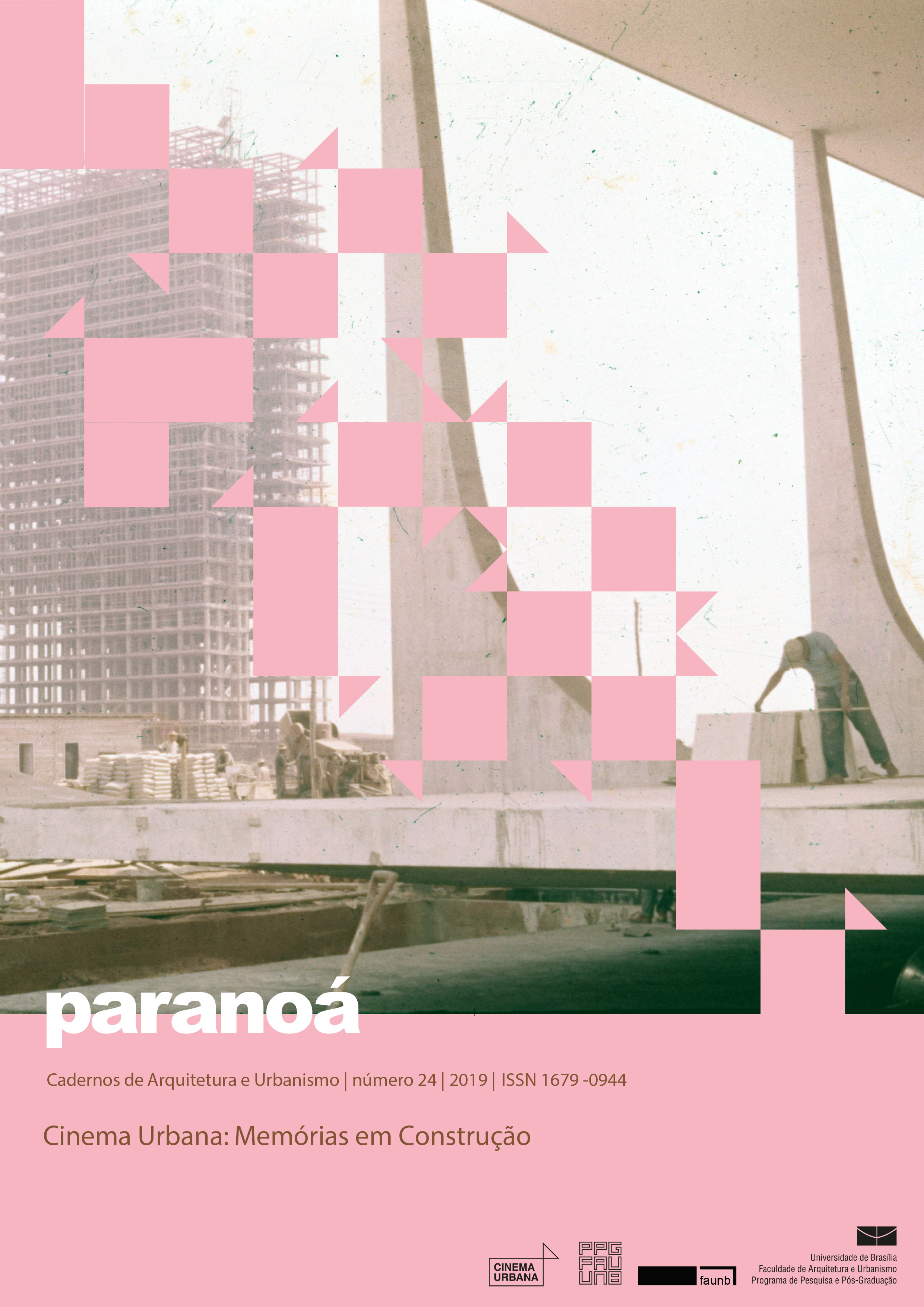O quadro, o corpo e o espaço no cinema
DOI:
https://doi.org/10.18830/issn.1679-0944.n24.2019.03Palabras clave:
Cidade e cinema, corpo e cidade, representação, aparelhoResumen
A cidade é um objeto inacabado e culturalmente produzido. Seus espaços são definidos historicamente por meio dos conflitos estabelecidos pelos diferentes grupos socioculturais que a conformam. As disposições espaciais e suas representações referem-se com a maneira com que o corpo se relaciona com a cidade ao longo do tempo. Posto isso, entende-se que a representação cinematográfica do espaço é feita por meio do recorte delimitado por um quadro quando o cineasta mira a paisagem. Esse quadro denuncia, entre movimentos e permanências filmadas, a cartografia do percurso daquele que opera a câmera definindo a imagem cinematográfica. A câmera é entendida como um “aparelho” que, por suas características, condiciona a construção do quadro e, portanto, da própria representação fílmica. Para compreender a representação cinematográfica de um espaço, portanto, se faz necessário investigar o quadro fílmico, ciente de que ele pressupõe uma relação entre corpo, espaço e câmera.
Descargas
Citas
AUMONT, Jacques. A Imagem. Campinas: Papirus, 1993.
_______________. A estética do filme. Campinas: Papirus, 1995.
BARBOSA, Jorge Luiz. A arte de representar como reconhecimento do mundo: o espaço geográfico, o cinema eo imaginário social. GEOgraphia, v. 2, n. 3, p. 69”“88, 2000.
BARTHES, Roland. A câmara clara: nota sobre a fotografia. Rio de Janeiro: Nova Fronteira, 2015.
BAZIN, André. O Cinema - Ensaios. São Paulo: Brasiliense, 1991.
CORRÊA, Roberto Lobato. O espaço urbano. São Paulo: Ática, 1993.
CULLEN, Gordon. Paisagem urbana. São Paulo: Martins Fontes, 1983.
EISENSTEIN, Sergei. A forma do filme. Rio de Janeiro: Jorge Zahar Editor, 1990a.
_________________. O sentido do filme. Rio de Janeiro: Jorge Zahar Editor, 1990b.
FLUSSER, Vilém. Filosofia da caixa preta: ensaios para uma futura filosofia da fotografia. 1a ed. São Paulo: Annablume, 2011.
______________. Comunicologia. Reflexões sobre o futuro. São Paulo: Martins Fontes, 2015.
SANTOS, Milton. A natureza do espaço. Técnica e tempo. Razão e emoção. 4a Edição ed. São Paulo: Editora da Universidade de São Paulo, 2006.
SENNETT, Richard. Carne e pedra: o corpo e a cidade na civilização ocidental. 4. ed. Rio de Janeiro: Best Bolso, 2016.
SHIEL, Mark.; FITZMAURICE, Tony. Screening the city. London / New York: Verso, 2003.
VANOYE, Francis.; GOLIOT-LÉTÉ, Anne. Ensaio sobre a análise fílmica. Campinas: Papirus, 2005.
ZEVI, Bruno. Saber ver arquitetura. 5a Edição ed. São Paulo: Martins Fontes, 1996.
Descargas
Publicado
Cómo citar
Número
Sección
Licencia
Autores que publicam nesta revista concordam com os seguintes termos:
- Autores mantém os direitos autorais e concedem à revista o direito de primeira publicação, com o trabalho simultaneamente licenciado sob a Licença Creative Commons Attribution que permite o compartilhamento do trabalho com reconhecimento da autoria e publicação inicial nesta revista. http://creativecommons.org/licenses/by/4.0
- Autores têm autorização para assumir contratos adicionais separadamente, para distribuição não-exclusiva da versão do trabalho publicada nesta revista (ex.: publicar em repositório institucional ou como capítulo de livro), com reconhecimento de autoria e publicação inicial nesta revista.
- Autores têm permissão e são estimulados a publicar e distribuir seu trabalho online (ex.: em repositórios institucionais ou na sua página pessoal) a qualquer ponto antes ou durante o processo editorial, já que isso pode gerar alterações produtivas, bem como aumentar o impacto e a citação do trabalho publicado (Veja O Efeito do Acesso Livre).















